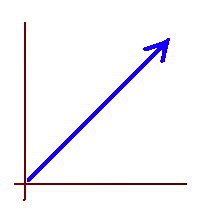Find your way around. Don’t get lost.Sometimes students ask me: “How long is going to take for me to pass this test?”
To which I reply: “It all depends on how fast you get to the performance level you need for the score you want.”
The key phrase here is “performance level,” which the tests are supposed to measure.
Sometimes I have to be almost brutally honest by saying: “Look, realistically, as long as you keep hesitating for more than three seconds to come up with the result of a single-digit multiplication, there is no chance you are going to solve a whole problem in less than two minutes. You want to have all those little things down to less than a couple seconds, with no hesitation whatsoever. You have to let go of all those thoughts about not being good at math, or not liking math. If you really want to pass this test, you need to learn how to handle fractions, and all these other things you always hated and have never completely understood so far.”
There is an interesting metaphor I find useful to help students start distancing themselves from their math phobias. I say:
“Think of it this way: Imagine Math is a city you used to visit when you were a child, a city you never liked because you always got lost, or maybe even someone stole your money, or you always got sick when you were there, or something bad like that. I acknowledge it’s only natural for you to harbor bad feelings about that city. Now, because you want to pass this test, it is like now you have to move to that city and live there for a few months. Not only that but, to finally get out of it, you need to work three jobs while you are there, and you need to excel at all of them. You are going to deliver packages during the day, deliver pizzas at night, and drive a taxi cab on the weekends. Do you think you can allow yourself the luxury of being lost again? Are you going to stand there all confused for hours about how to cross the street, or about what avenue takes you downtown? To really do well in those three jobs you want to know all the landmarks, the big buildings, the highways, street names, bus routes, trolley stops, shopping malls, different neighborhoods, and the like, right? So, it’s just like that in math, too. Welcome to Number City. That is why I recommend you to memorize by heart the times tables, square numbers, primes, powers of two, odds, evens, integers, and things like that, so you can easily find your way around and move from place to place as fast as you can without getting lost again. Number sets like “squares” or “primes” are like avenues. Each individual number is like a franchise brand name, with multiple locations around the city. Algebraic operation rules are ways to get fast from place A to place B, like taking the subway or the highway or something like that. You want to set aside your old fears and phobias for a while, and apply yourself to the task of getting to know your way around this city. Then you will pass your test and you will be able to move out and move on with your life. That is what’s needed.”
I find the above analogy helps some students to kind of materialize their math fears and phobias into something external, and objective. They know what is like to familiarize oneself with a new city, so this is a task that looks familiar, doable, and makes sense for them. So they can stop the negative workout on their self-esteem, and focus instead on these concrete and essential memorization steps.




